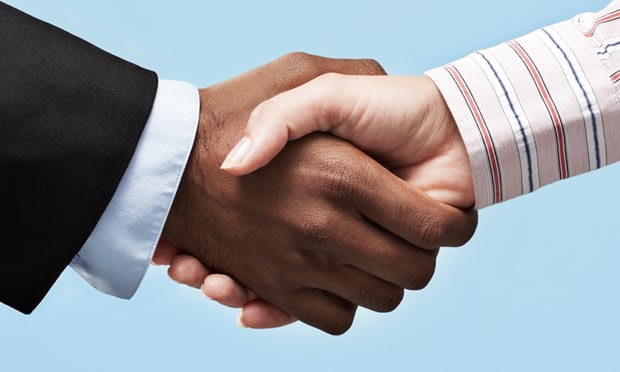Now researchers have revealed that strangers are more likely to be trusted if they look like someone who has earned your trust before – and more likely to be distrusted if they resemble someone who has betrayed your faith in them.
While previous research has shown how people can learn whether others are trustworthy over time, the team say it was unclear how an initial judgment is made about whether to trust or cooperate with someone.
“What we wanted to figure out was what happens when you come across somebody for the first time,” said Dr Oriel FeldmanHall, co-author of the research and a social neuroscientist from Brown University.
Writing in the journal PNAS, a team of researchers in the US reveal how they asked 29 participants to either keep $10 or invest all – or part – of it with one of three men they did not know but whose photographs they were shown.
Over the course of 45 games, 15 for each photograph, participants discovered that while one of the three men frequently shared the profit from the investment, another only shared the money 60% of the time, while the third very rarely shared it at all.
The team then carried out a second experiment in which participants were asked to pick a partner for a new game: either a player whose face they couldn’t see, or a player whose face they were shown in a photograph. While four were completely new faces, 54 photographs were images that had been tinkered with so the picture looked more or less like players from the previous game. Each photo was shown twice, and FeldmanHall says the team were careful to make sure they differed enough to be unrecognisable as the faces used in the first task.
The results reveal that the more a possible player looked like the trusted individual from the previous game, the more likely participants were to select them as their partner for the next task, while an even stronger negative effect was found for those who resembled the untrustworthy man in the initial game. Just over 68% of participants turned down the pictured player if he bore any resemblance to the untrustworthy man.
FeldmanHall noted the findings are similar to the seminal experiments in which Russian scientist Ivan Petrovich Pavlov’s dogs learned to associate the sound of a certain bell with food. “If Pavlov would ring a similar type of bell, the dog would also salivate – it would just salivate a little bit less,” said FeldmanHall.
The team then carried out the same experiments with 28 new participants, while fMRI brain scanning took place.
Among their findings, the team discovered that as the image of the potential candidate was tweaked to look more like the untrustworthy player of the initial game, activity in the amygdala – an area of the brain linked to processing threat – became stronger.
Antonio Espín, a behavioural economist from Middlesex University, London, said the study’s implications could be wide-ranging. “Interestingly, since the main reason for facial similarity is shared genes, the study not only advances our understanding of why we trust or distrust specific strangers but also has broader implications, for example for ethnic or racial discrimination and in the evolutionary arena of partner selection.”
More about: #Science
















































